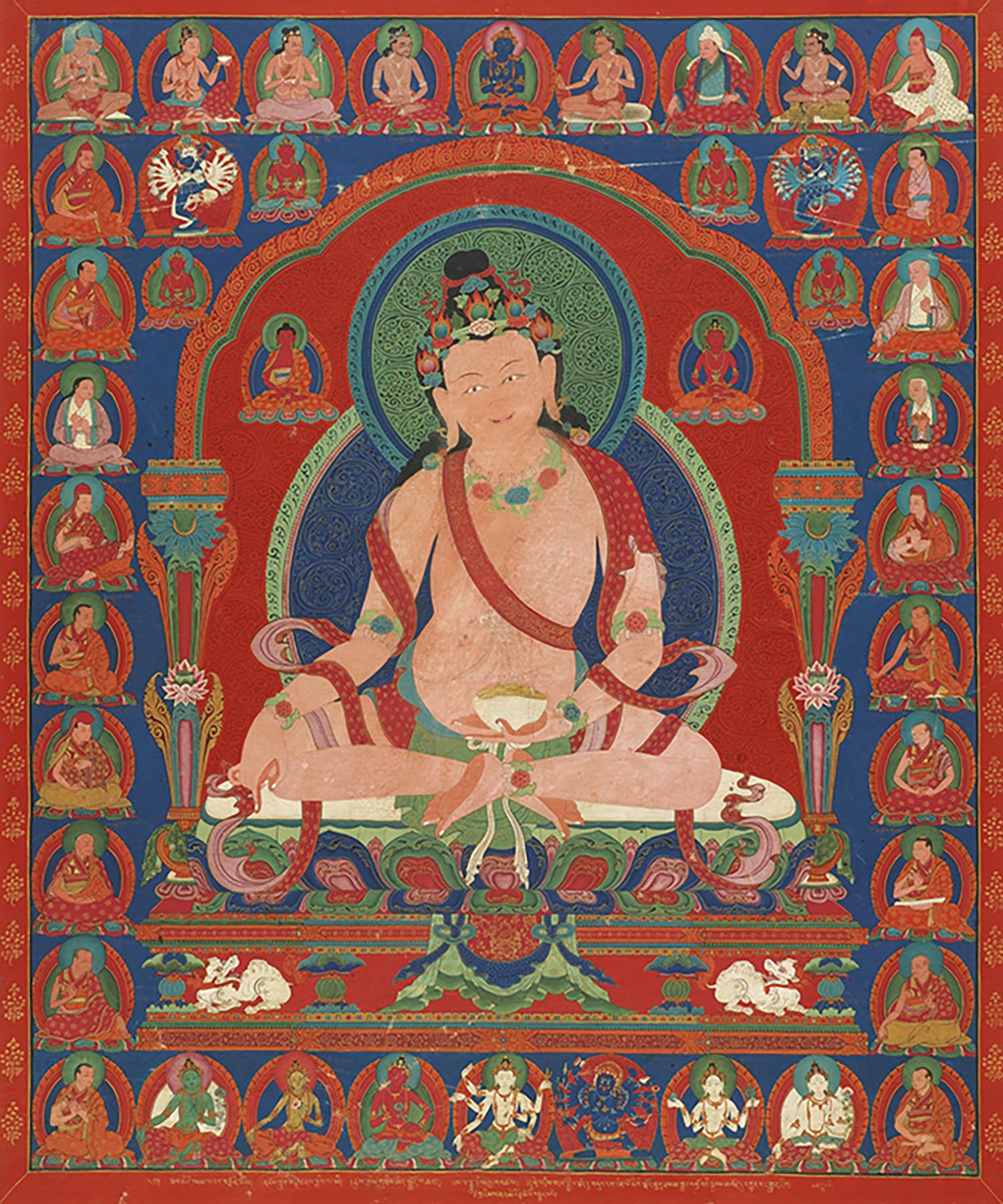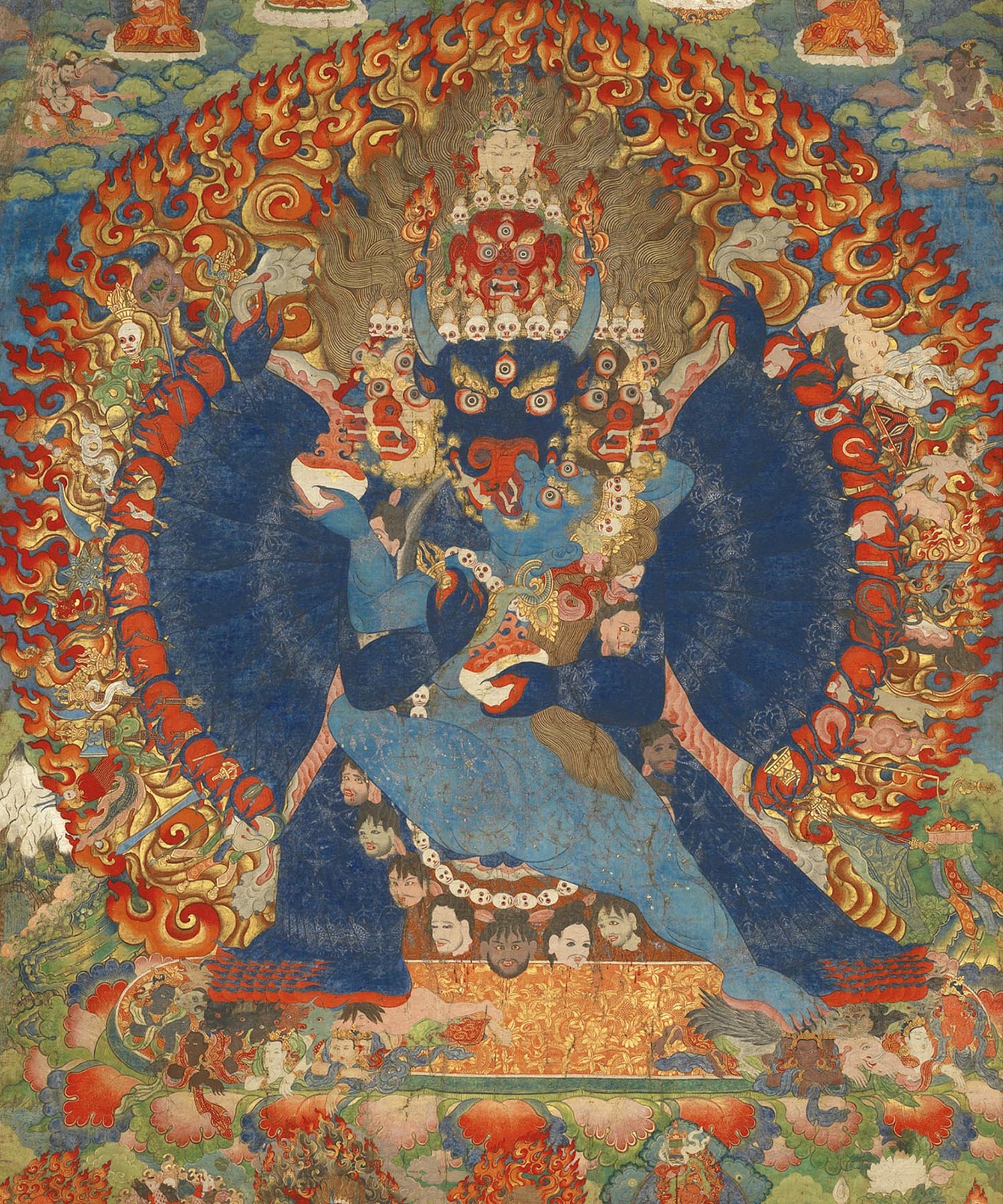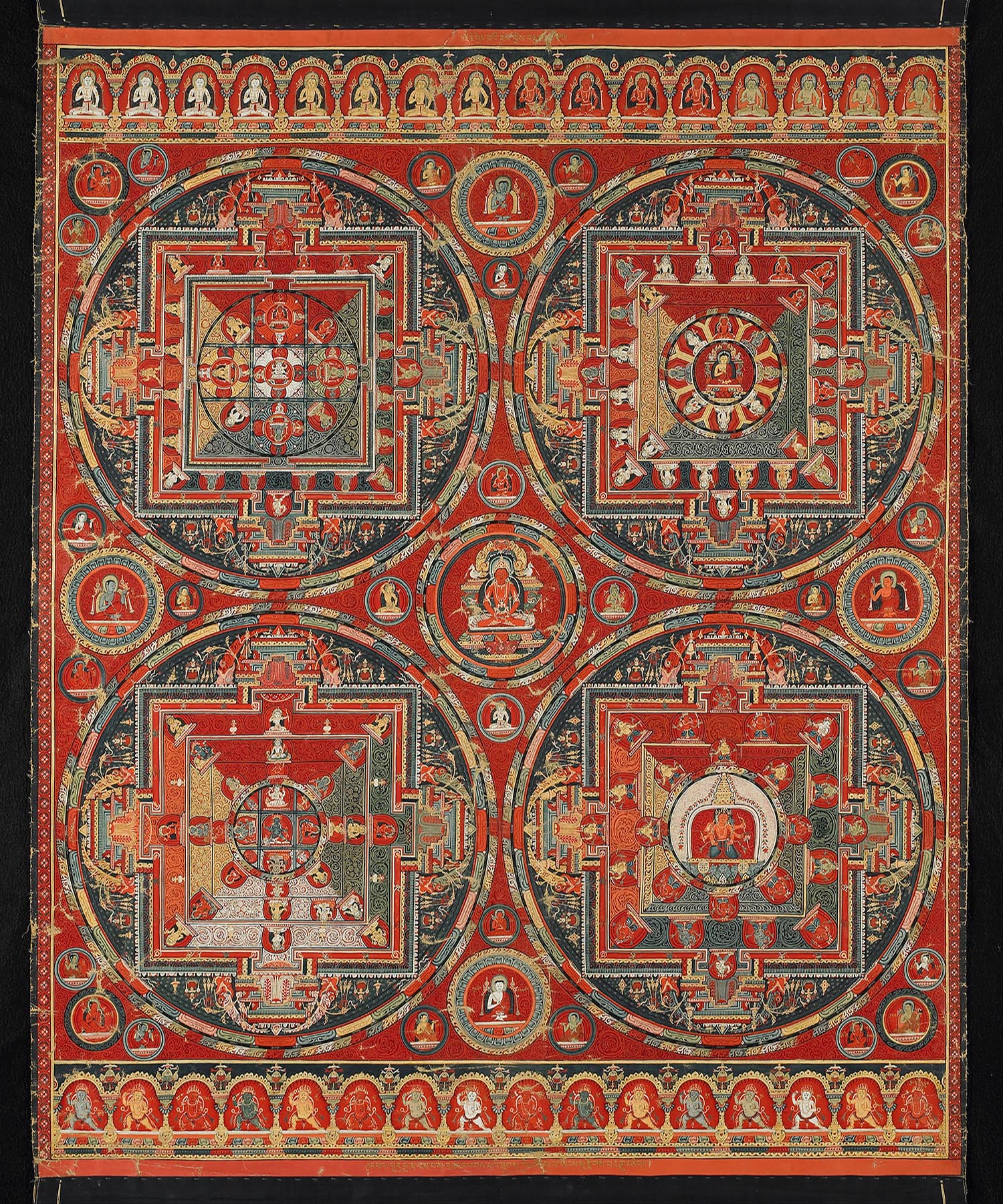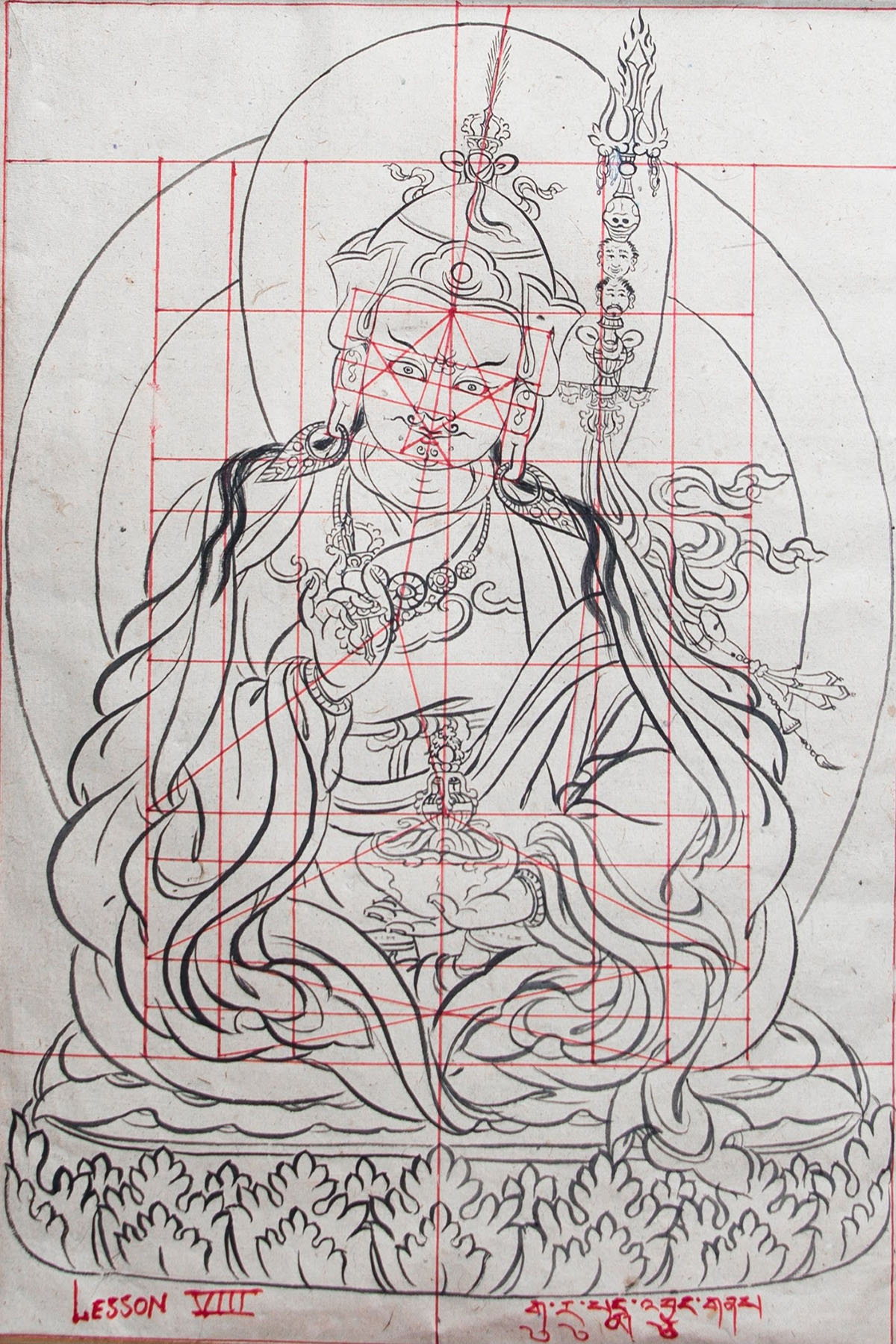ARTICLE
Thangka
A devotional tradition where images of Buddhist deities are painted on scrolls, to gain divine merit and for teaching and meditating, historically, thangka paintings served as visual aids.
The tradition emerged from Nepal in the seventh century and spread to the Himalayan region, significantly Tibet (now Tibet Autonomous Region). Travelling Buddhist teachers would deliver talks on Buddha’s life and teaching and complement their lectures with these painted scrolls. Thangka paintings function as intermediaries between the mortal and divine world; when consecrated in shrines or family altars, they are believed to be occupied by the deity they depict. They are also worshipped as part of public religious ceremonies, and often commissioned as a means of generating spiritual merit. They are also used to guide and enhance meditation.
Derived from the pata paintings of India and practices of drawing mandala into the ground for ritual use, thangkas came to be painted on woven canvas, usually cotton, with bamboo-cane rod pasted on its bottom edge so that it could be rolled. Generally rectangular, the canvas is strung on a bamboo frame, which is stretched onto a wooden frame. It is washed and scrubbed many times and the surface is traditionally coated with chalk, gesso (animal glue) and a base pigment, which is then replaced by a distemper-glue mixture and rubbed with a piece of porcelain or glass until it is smooth. The outlines of deity and composition are then made in charcoal or pencil, according to rules of iconography and iconometry in grids. These pencilled drawings are painted over with a fine brush and later painted in. The colours used in painting were sourced naturally from vegetable and mineral pigments and mixed with lime and gluten. The colours used include red, arsenic yellow, vitriol green, carmine vermillion, lapis blue, indigo and gold. The main deity is painted once the background is filled in. When finished, the painted thangka is given a silk brocade border that usually consists of red, yellow and blue fabrics. The thangka also has a finer silk fabric stitched on it to function as a protective curtain. This is usually yellow in colour. Besides being painted, some traditional thangkas were also embroidered or appliqued.
The paintings contain depictions of Buddha and scenes from his life, Buddhist deities, saints and lamas (teachers), divine beings in assembly around the cosmic tree, the Wheel of Life, mandalas, symbolic representations of the universe from canonical texts and horoscopes. Depending on the subject depicted, some thangkas presented the immediate presence of enlightened beings while others showed events from their past and had a narrative. The thangka of Buddha’s First Sermon, for instance, depicts a crucial moment from Buddha’s life where, as prince Siddhartha, he travels with five companions with whom he undergoes extreme deprivation in search of truth. The Sikkim Thangka, created and developed during the rule of the last Chogyal (priest-king) of Sikkim, uses Buddhist imagery to tell the founding myth of Sikkim; three venerated lamas are shown along with the Chogyal in a canvas replete with Tibetan and Sikkimese symbolism. The protector deity of Sikkim, Kanchendzonga – a fiery red deity riding a snow lion and holding a banner of victory – is shown along with the Tibetan protector of monasteries, Mahakala – a black deity on a black horse – and the deity of Nagas – local faith of Sikkim – is depicted in white. Events from the past lives of divine beings were also depicted, such as that of the Buddha as Shakyamuni. Besides paintings of enlightened beings, inanimate sacred objects such as stupas, temples and monasteries were also portrayed.
The simplest of compositions would portray a single figure placed at the centre, usually that of the Buddha or a deity. When a composition comprises many sacred figures, attention needs to be paid to make each grouping distinct from one another and to ensure that the identities and positions of the figures are according to iconographic prescriptions. In these complex compositions, the retinue of figures would be smaller and arranged in vertical and horizontal columns, usually painted only in outline (often of gold). Thangkas carrying these depictions would usually not incorporate a background landscape and were painted using either a red or black background and full colour was reserved for the main deity. In another variety of group composition, an assembly of figures is depicted without any main figure – such as in depictions of the eighty-four siddhas (great masters) or the sixteen arhats (elders).
The tradition has changed significantly over time. While some monasteries continue to train lamas in the art form, most thangka painters now are artisans who have received training in the art and produce them for both commercial and religious purposes. The use of acrylic paints and synthetic fabrics has become common. Consequently, thangka paintings serve not just as highly revered objects but also as decorative items now.
Bibliography
Our website is currently undergoing maintenance and re-design, due to which we have had to take down some of our bibliographies. While these will be re-published shortly, you can request references for specific articles by writing to hellomapacademy@map-india.org.










